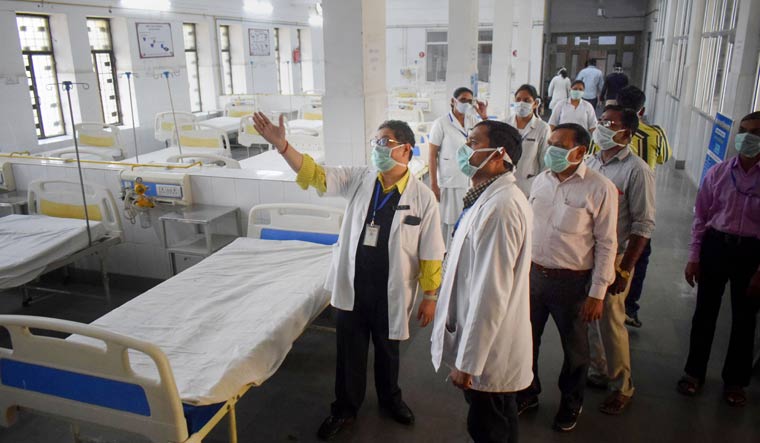
Climate changes could boost vector-borne, infectious diseases in India

Changes in climatic conditions, particularly temperature and moisture variations, will result in a surge in the spread of vector-borne and infectious diseases across India, scientists say.
Amid concerns mount over a steep rise in respiratory viral infections in many parts of the country, the scientists said climate change was a definitely plausible reason although it was too early to come to a conclusion.
The prospect of climate change – including extreme rainfall in some places and drought in others – could lead to diseases like dengue, chikungunya and malaria.
Public health expert Poornima Prabhakaran said the steadily rising temperatures affected the pattern of transmission of disease agents such as viruses as well their vectors through a number of pathways.
Incubation
These include changes in the incubation period, the transmission potential and the duration of transmission. “All these can impact the trends of diseases,” Prabhakaran, director of the Centre for Environmental Health at Public Health Foundation of India (PHFI), told PTI.
Incubation period is the time between exposure to a pathogenic organism and when symptoms and signs are first apparent.
“Hot and humid conditions can both impact the disease transmission pathways, frequency of disease occurrence and severity of disease,” she said.
Ecologist Abi T Vanak added that changes in climate will result in the shift of habitat for species, thereby introducing new vectors to some areas, or making some species more susceptible to new viruses with the potential to transmit to humans.
Extreme rainfall and flooding in the drier parts of the country can result in outbreaks of diseases typically associated with the wetter parts, Vanak, interim director of the Centre for Policy Design, Ashoka Trust for Research in Ecology and the Environment (ATREE), Bengaluru, told PTI.
Vector-borne diseases
“This is applicable to both water-borne diseases such as cholera and dysentery, as well as vector-borne diseases such as malaria, dengue, and chikungunya.”
Prabhakaran’s team is involved in a collaborative research effort that aims to demonstrate the links between changing climate conditions and patterns of diseases like dengue and malaria.
Modelling future scenarios using state-of-the-art techniques that allow predictive future disease patterns or hotspots can be useful to aid decision-makers in planning suitable and timely interventions, researchers said.
A study published last year in the journal Nature predicted that climate change will vastly increase the risk of new viruses infecting humans.
The finding holds particularly true for countries such as India, Indonesia, China and the Philippines and some African regions that have been hotspots for deadly diseases spread from animals to humans over the last several decades.
Global warming
Global warming is linked to the risk of new emerging viruses, said Debapriyo Chakraborty, a postdoctoral researcher in France.
“India is thought to see a rise in certain vector-borne viral diseases following global warming,” Chakraborty told PTI.
Global warming, he said, will also lead to increased floods, which may trigger important water-borne viral diseases such as Hepatitis A and Norovirus, a very contagious virus that causes vomiting and diarrhoea.
There are several perspective research papers on the risks between climate change and disease risk in India.
It is known that the traditional emergence of bird flu viruses during winter months is linked to winter migratory ducks.
It is now speculated that climate change is disrupting both their behaviour and migratory routes, causing the viruses during warmer months too, the researcher said.
Also, human behavioural and demographic change (increased use of AC, changed crop cycle and mass migration) to climate change can also change the epidemiology of viruses, Chakraborty said.
(With agency inputs)


